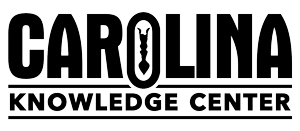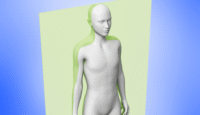While studying photosynthesis, students can have difficulty understanding how the carbon in CO2 becomes the carbon in glucose (6H2O + 6CO2?C6H12O6 + 6O2). To clarify this concept, have your students create a basic diagram of the Calvin cycle by drawing a large circle on a piece of white drawing paper and dividing the circle into thirds. Use the labels carbon fixation, reduction, and regeneration to identify each of the cycle’s distinct steps. Provide students with pop beads* to track carbon atoms throughout the cycle.
Students can simultaneously demonstrate basic redox reactions and substrate-level phosphorylation. Allow black pop beads to represent carbon, pink or purple beads to represent phosphorous, and red to represent oxygen.
Use the following steps and corresponding visuals to guide students through the process of incorporating CO2 into the Calvin cycle to create sugar and regenerate RuBP.
Carbon fixation
Step 1: Create a CO2 and RuBP molecule.
Step 2: Attach the carbon molecule to the RuBP carbon chain to show the removal of O2 from the cycle. (Note: This 6-carbon molecule is a short-lived intermediate; it will be converted into two 3-carbon molecules and then move into the reduction phase.)
Reduction
Step 3: Add to the diagram 2 ATP molecules, which will be converted to 2 ADP molecules during the phosphorylation of the two 3-carbon molecules. Show this process by moving the two 3-carbon molecules along the cycle with the addition of a phosphate group to each end. Each molecule should now have a phosphorous atom on each end of the 3-carbon chain.
Step 4: Show the oxidation of NADPH as it reduces the 3-carbon molecule into G3P. Demonstrate this on your paper by adding 2 NADPH molecules and showing the conversion to NADP+ with inorganic phosphate.
Step 5: Repeat steps 1—4 two more times until you have 6 molecules of G3P.
Step 6: Demonstrate the output of 1 G3P molecule (a sugar), which will combine to make glucose. Simultaneously, move the remaining 5 G3P molecules along the cycle to begin regeneration of RuBP.
Regeneration
Step 7: To convert the 5 G3P molecules into RuBP, add 3 ATP molecules, which will then be converted into ADP. (Note: This provides the energy to rearrange the 5 molecules back to 3 molecules of RuBP.)
Now, the cycle is ready to begin again.
*If you don’t have pop beads, consider using miniature marshmallows or small pieces of clay held together with a toothpick (like a shish kebab) as a substitute.
Related Items
Author
Jill Daniels
Science Department Head
Geneva School of Boerne – Boerne, TX






